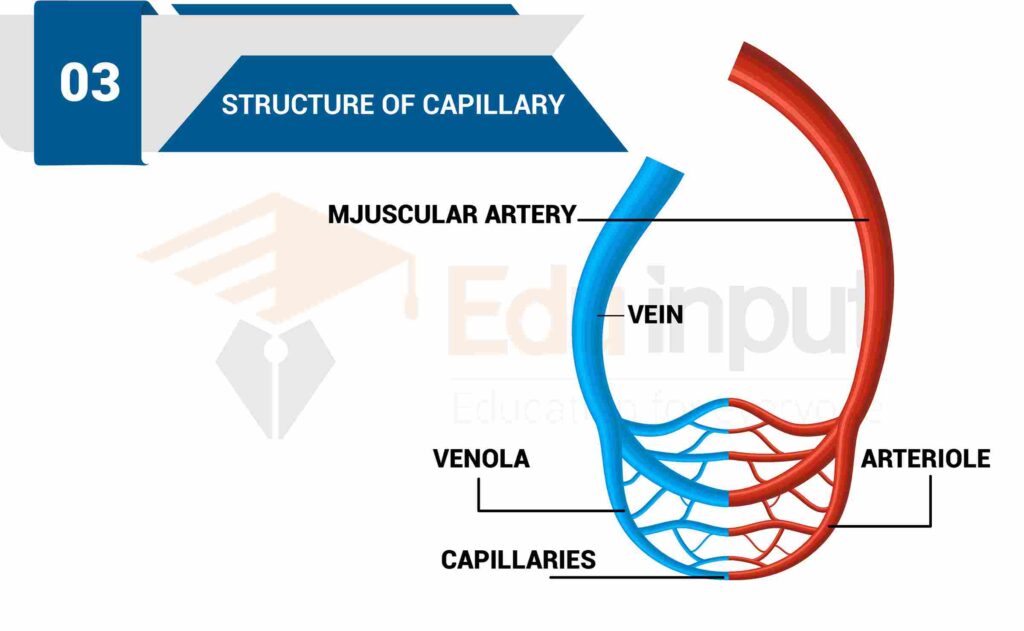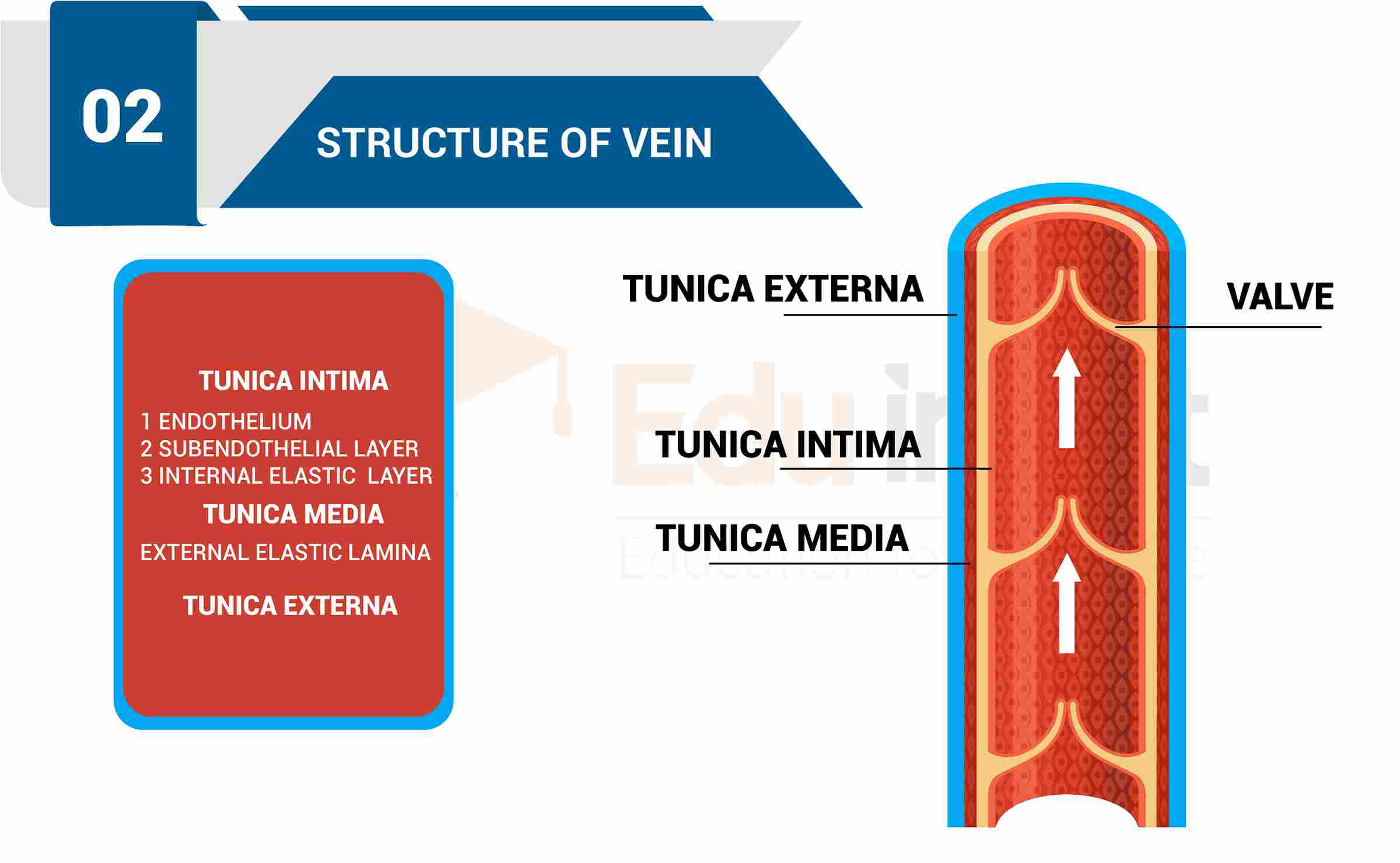What are Capillaries?-Types, Mechanism of Action, and Functions
The microscopic blood vessels with only one cell thick wall are called capillaries. The word capillary comes from the Latin word capillus meaning little hair or beard. Capillaries are tiny blood vessels that carry oxygenated blood from the heart to the tissues throughout the body. They are found in every organ except the brain.
Capillaries are found throughout the body, especially in the skin, muscles, bones, and brain. The smallest capillary diameter is 0.1 micrometer (µm), which is equivalent to the width of a human hair.
The blood remains confined within the capillary wall. But the walls of capillaries are permeable to water and dissolved substances. So water and dissolved substances pass in and out of the capillaries. Thus oxygen, carbon dioxide, dissolved food, and excretory product are exchanged between the capillary and tissues. There is a dense capillary network.
So every cell is near the capillaries and exchanges food and gases. Take place easily. In the liver, every cell is in direct contact with the capillary. The nervous stimulation can change the diameter of the capillaries.
Some chemicals like histamine dilate the capillaries. The change Of shapes of cells of the capillaries wall changes the diameter of the capillaries. The amount of blood flowing through the capillaries is also regulated by pre-capillary Sphincters. Thus the amount of blood flowing through certain tissues is controlled.

Mechanism of Action of Capillaries
The materials are exchanged between the blood and body tissue through capillaries. The change of material occurs in three ways:
The material is passed through the cell lining the capillary wall into the interstitial or extracellular fluid by active transport and diffusion. This material is then passed into the body cells and vice versa.
The material is also exchanged through the intracellular spaces between the endothelial linings of the wall of the capillary. Then, this material is passed into the extracellular fluid.
The cells of the lining of the capillary wall take up material from the cavity of the side (outer side of the capillary) by exocytosis. The material is passed from the capillaries by endocytosis. These capillary cells then pass this material to the other Thus the material is exchanged between the blood and tissues through the interstitia intracellular space (extracellular fluid) into the blood in similar ways.
Types Of Capillaries
There are three types of capillaries;
Continuous Capillaries:
The capillaries with no pores are called Continuous capillaries.
Fenestrated Capillaries:
These capillaries have small pores. These pores allow small molecules to move through. These are located in the intestines, kidneys, and endocrine glands.
Sinusoidal Capillaries:
capillaries with large open pores are called Sinusoidal or discontinuous capillaries. These pores are large enough to allow a blood cell through.
Function of Capillaries
The blood remains confined within the capillary wall. But the walls of capillaries are permeable to water and dissolved substances. So water and dissolved substances pass in and out of the capillaries.
Thus oxygen, carbon dioxide, dissolved food, and excretory product are exchanged between the capillary and tissues. There is a dense capillary network. So every cell is near the capillaries and exchanges food and gases. Take place easily.

 written by
written by 



Leave a Reply